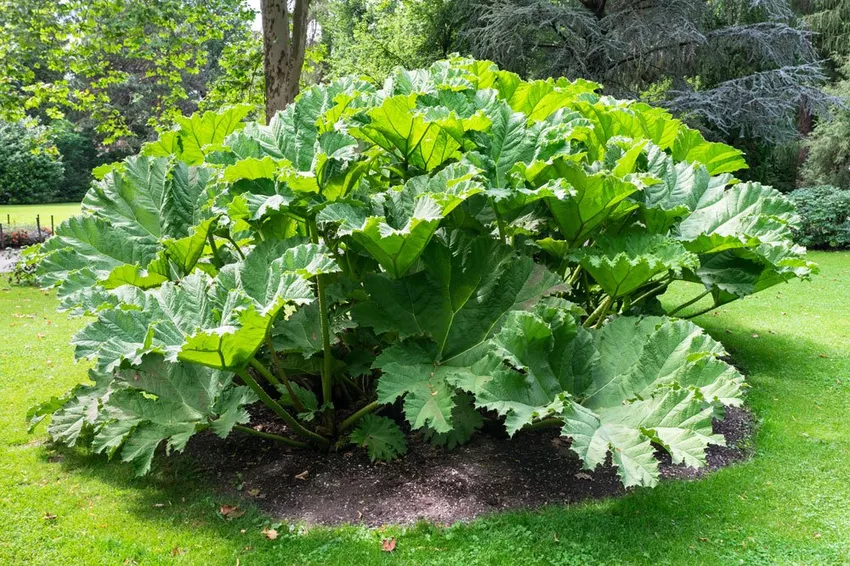Are you looking for stately greenery for your garden pond? Then the mammoth leaf is just the thing. While it requires little maintenance, there are a few mistakes to avoid.

The mighty mammoth leaf (Gunnera manicata) is an absolute eye-catcher in the garden with its huge leaves. In particular, you can skilfully stage the oasis of calm by the garden pond. The plant is easy to grow and you will soon be enjoying this perennial herb.
Even if the plant is very easy to care for, you should definitely avoid a few mistakes. These include too high a planting density, too shallow a planting depth and insufficient watering. If you follow our tips, nothing stands in the way of a successful cultivation.
Profile of the Mammoth Leaf
| Mammoth leaf (Gunnera manicata ) | |
|---|---|
| Growth: | spreading and clump-forming |
| Growth: | 150 - 300 cm |
| Growth: | 150 - 300 cm |
| Root system: | Rhizomes |
| Location: | Evening sun to partial shade |
| Floor: | nutrient-rich, humus-rich, fresh to moist soil |
Planting mammoth leaves - that's what matters
» Optimal time:
You can plant the mammoth leaf from April. If you want to be absolutely sure that no more night frosts are to be expected, postpone the project until after the ice saints in mid-May.
Later planting in summer or autumn is not advisable. The mammoth leaf is not fully hardy anyway. An underdeveloped root system increases the risk of losing the plant in the cold season.
» Location:
Cool and semi-shady: This is how the mammoth leaf likes it best. Locations on the north or east side of the house and in the semi-shade of large conifers offer the right conditions. The mammoth leaf is also very suitable for greening pond edges. However, the perennials are not allowed in the pond waterstanding.
Avoid tightness and distress at all costs. The mammoth leaf, with its mighty leaves and no less impressive huge flowers, needs a lot of space. The perennials do not like the tough competition for light, water and nutrients at all.
» Floor:
The soil at the site should be permanently moist and very rich in nutrients. Regular mulching and fertilizing will help satiate the sequoia leaf's appetite. Don't underestimate the amount of water that evaporates over the enormous leaf surfaces in summer. Regular watering is an absolute must on dry days.
» Planting instructions:
If you plant a mammoth leaf, it is probably a newly purchased specimen from a garden store or an offshoot that you obtained through division. You can put a purchased mammoth leaf straight into the garden. Keep a distance of at least one meter from neighboring plants and plant the mammoth leaf 50 to 60 centimeters deep. Water the plant vigorously. However, there should be no pools of water that remain for a long time.